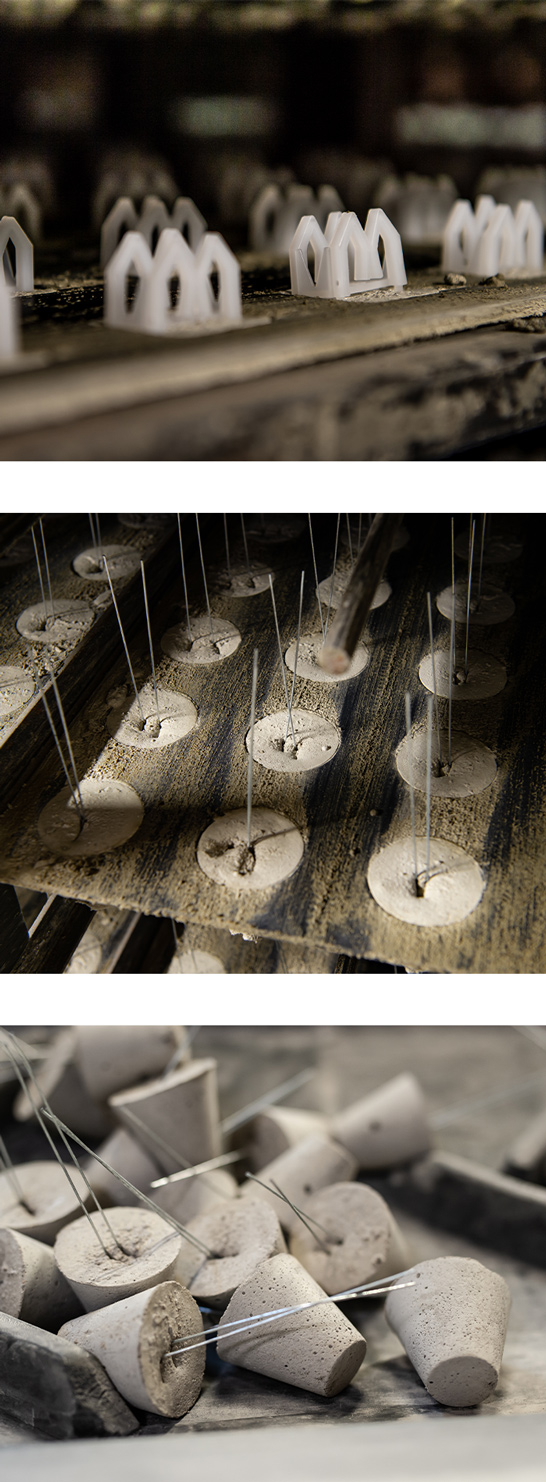Corrosion protection and durability depend, among other things, on the concrete cover and the spacer material used.
In order to protect a construction in the best possible way, the 'material integrity' of the concrete cover must be maintained. Plastic has a different coefficient of thermal expansion than concrete. At different temperatures, this can cause tension in the binding surface of the spacer with the surrounding concrete. Combined with the lower binding of plastic with concrete, this can quickly lead to the separation of the spacer from the surrounding concrete, creating a path for the accelerated penetration of chlorides and other chemicals. This strongly reduces the durability of the construction. However, concrete spacers retain their material integrity, and when used correctly, prevent binding problems.
User instructions for concrete spacers.
The mounting mechanisms on the spacers allow quick and accurate positioning, which guarantees that the concrete cover is correct. Plastic fastening mechanisms for concrete spacers, such as Molenaar Betonindustrie's MoClip or MoStek, are found at a maximum of 7 mm in the cover zone, so these products do not adversely affect the durability or material integrity.
But how?
Plastic spacers bind poorly with the surrounding concrete. In addition, the thermal expansion and contraction of plastic spacers is higher than that of concrete.During the curing process, the spacer can expand due to a higher temperature in the concrete. The spacer will contract to its normal size after the concrete has been cured and the temperature has dropped. This creates a gap between the plastic spacer and the concrete, through which chlorides can pass. These problems are exacerbated at higher curing temperatures (for example, in steam curing).
A plastic spacer is also subject to weathering/corrosion. This means that the chance of a passage forming through which harmful elements might pass is higher than when using concrete spacers.


